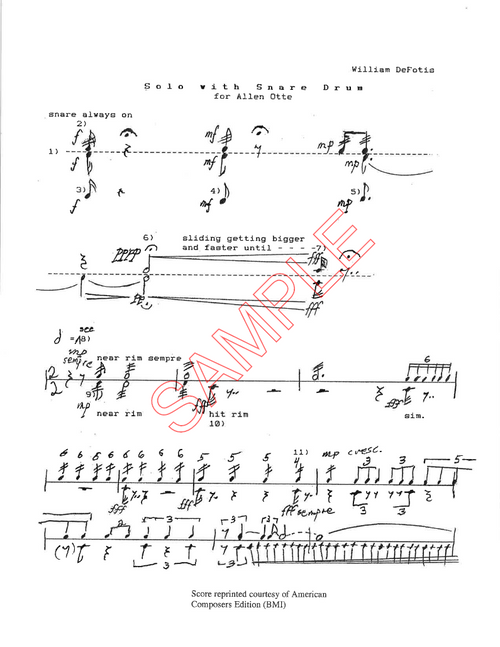This original suite for drum set and an ensemble of hand clappers (at least 4), ensures a round of applause after each performance. Four movements, Shuffle, Waltz, Rumba, Fox-trot, can be performed with any type of drum machine in place of the drum set. Duration: ca. 10'
Want it now? Click here to purchase a digital copy of this product.
Review from Percussive Notes (2022):
Suite for Sideman and Handclappers
Jack McKenzie
Jack McKenzie is remembered as an exceptional educator, a founding member of PAS, and former director of percussion studies and dean at the University of Illinois. Along with his time at this iconic program — he was the first percussionist to graduate with a Bachelor of Music degree, according to Tom Siwe — McKenzie also taught percussion at the Interlochen summer music camp. It was there, in the early 1960s, that one of the first performances of “Suite for Sideman and Handclappers” took place, inspiring a young Michael Udow, who was attending the summer music camp during his teenage years, to start writing his own compositions. It is not entirely clear which came first; but by 1964, there were three handclapping ensembles composed in the northern Midwest: McKenzie’s “Suite for Sideman and Handclappers,” Benson’s iconic “Rondino for 8 Hand Clappers,” and Udow’s “Suite for Jazz Drums and 4 Hand Clappers.”
Originally published in 1969, McKenzie’s suite consists of four movements in unique styles: shuffle, waltz, rumba, and fox-trot. Each movement begins with a four-measure improvised solo by the drum set in the appropriate style, then the written handclapping begins. The ensemble was composed during the heyday of the Wurlitzer Side Man, arguably the first drum machine, and McKenzie includes in the program notes that the piece could be performed using an electronic drum machine in lieu of a drum set soloist. Due to the interchangeability between drum set soloist and electronic rhythmic device, the handclapping can either be read as background material for a featured performer or as rhythmic motives that propel each movement forward.
Regardless of interpretation, these four short movements serve more as a rhythmic study than a musical masterpiece, well fit for a young group needing to put together a short piece with little rehearsal time. The full print edition arrives with several copies of the score so performers can see all parts intertwined, and with the ease of doubling, this piece could be performed with a large group or a small chamber ensemble.
—Matthew Geiger








